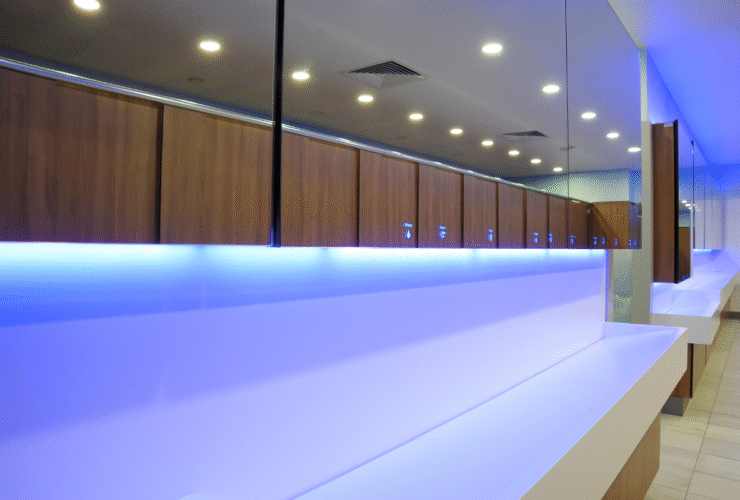There are numerous poor toilet habits that must be avoided to prevent the spread of infectious diseases like COVID-19. This article shows how the right toilet design can help with this issue.
Whether fitting a washroom in a school, shopping center or another public space, it is essential that good hygiene standards are encouraged and effectively maintained. In doing so, it is possible to ensure that there is a far reduced chance of bacteria and germs being spread around within this space. That is a problem, particularly when the number of shared surfaces in a washroom is considered. Let’s take a look at some of the issues with poor toilet practices and the right design solutions that can help mitigate the problem.
Failing To Wash Hands
There are two main reasons that people tend to avoid washing their hands when they visit a public toilet. First, they might want to get out of the toilet as quickly as possible because they don’t like the environment. If a toilet doesn’t feel welcoming or clean, then people are going to want to rush in and out rather than spending time washing their hands and adopting the right hygiene practices. To avoid this, it’s important to make public washrooms more pleasant. For instance, you can think about adding a modern flair to the design with bright, vibrant colors and the right lighting.
It could also be worth exploring elements of a biophilic design. Laminate wood flooring could be a great choice here. This will ensure that this space does feel more natural rather than seeming like a concrete cube in a building. Remember, washrooms typically won’t have windows, so adding other natural elements into the design can be beneficial.
The second reason people fail to wash their hands is that it’s not user friendly. You can quickly correct this with the right technology and equipment. Sensor taps, contactless soap dispensers and automated dryers should all be incorporated into the bathroom design. This will almost certainly be enough to encourage users to spend the time washing their hands the right way and keeping the key hygiene standards intact.
Failing To Lift Up Toilet Seats
In men’s washrooms, users can encounter the issue of previous visitors not lifting up the toilet seat. This can be a nightmare as it will mean that the seat is often unclean, stained and potentially wet. A toilet user shouldn’t have to spend time cleaning the seat before they can use it. There are a few ways that you can deal with this problem. You might want to consider providing a toilet seat cover dispenser as part of your bathroom design.
This simple choice will provide users with the peace of mind that they can always sit on a clean seat. Alternatively, you could think about investing in advanced toilets where the seats lift up automatically when not in use.
These systems once again use sensors to detect when a user is in a cubicle. If a user needs the seat, they can simply push it down. When they leave, the toilet seat will automatically pop back up into the upright position.
Personal Space
It’s essential that users do have enough space in public bathrooms to feel comfortable. It is easy to ensure that this is the case with the right design.
It is important to consider how much space there is between different cubicles. You don’t want users to feel cramped because this is going to mean a rather unpleasant experience.
Avoiding Issues With Toilet Paper
There’s nothing worse than entering a public washroom and sitting down, only to discover that there is no toilet paper. This is exactly what happened when people started hoarding toilet paper over time. Many began taking it out of washrooms whenever they visited, leaving nothing behind.
This can lead to issues with anxiety and problems with people not feeling comfortable using public washrooms. One way to avoid this is to ensure that toilet roll dispensers are as secure as possible. Toilet roll dispensers can be fully integrated into the design of a bathroom to guarantee that this doesn’t become an issue.
As you can see, there are numerous ways that you will be able to guarantee that a washroom is more comfortable and provides a better environment for people using it. This will ultimately encourage better washroom behavior including washing hands and ensuring that people do lift the toilet seats up.
If you provide the right environment people will instinctively want to do their part in ensuring that it is clean, well maintained and free from germs.



